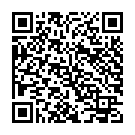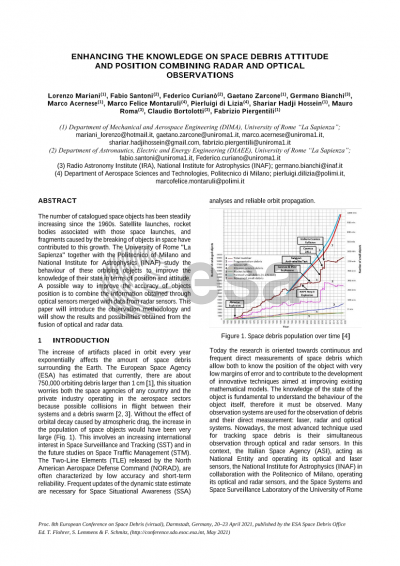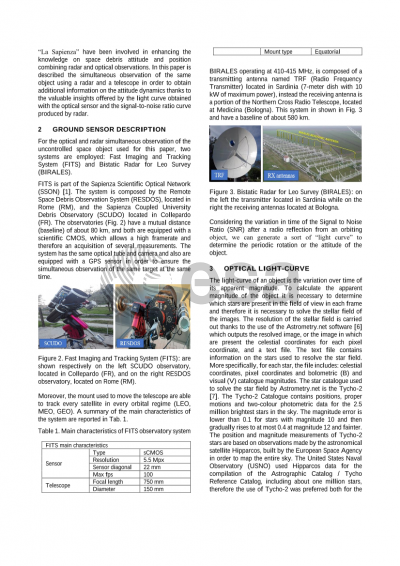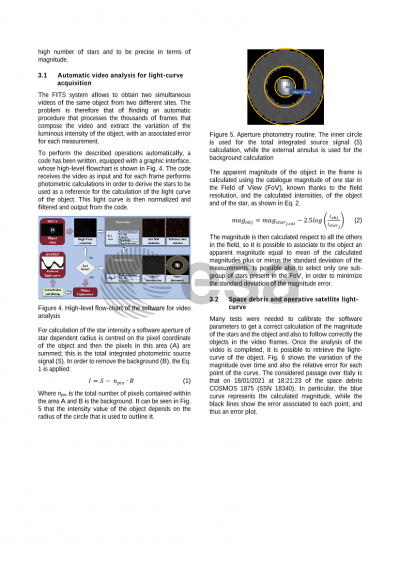Document details

Abstract
The number of catalogued space objects has been steadily increasing since the 1960s. Satellite launches, rocket bodies associated with those space launches, and fragments caused by the breaking of objects in space have contributed to this growth. Without the effect of orbital decay caused by atmospheric drag, the increase in the population of space objects would have been very large. This involves an increasing international interest in Space Surveillance and Tracking (SST) and in the future studies on Space Traffic Management (STM). The Two Line Elements (TLE) released by the North American Aerospace Defense Command (NORAD), are often characterized by low accuracy and short-term reliability. Frequent updates of the dynamic state estimate are necessary for Space Situational Awareness (SSA) analyses and reliable orbit propagation. The University of Rome "La Sapienza" together with the Politecnico of Milano and National Institute for Astrophysics (INAF) study the behavior of these orbiting objects in order to improve the knowledge of their state in terms of position and attitude. A possible way to improve the accuracy of objects position is to combine the information obtained through optical sensors merged with data from radar sensors. Furthermore, the simultaneous observation of the same object using a radar and a telescope grants additional information on the attitude dynamics thanks to the valuable insights offered by the light curve obtained with the optical sensor and the signal-to-noise ratio curve produced by radar. This paper will introduce the observation methodology and will show the results and possibilities obtained from the fusion of optical and radar data, the former from the Rome observatory managed by the Space Systems and Space Surveillance Laboratory (S5Lab) of the University of Rome "La Sapienza" and the latter from a bistatic-radar whose receiving part is located in Bologna and managed by the National Institute of Astrophysics in collaboration with the Politecnico of Milano.
Preview







